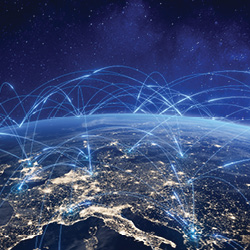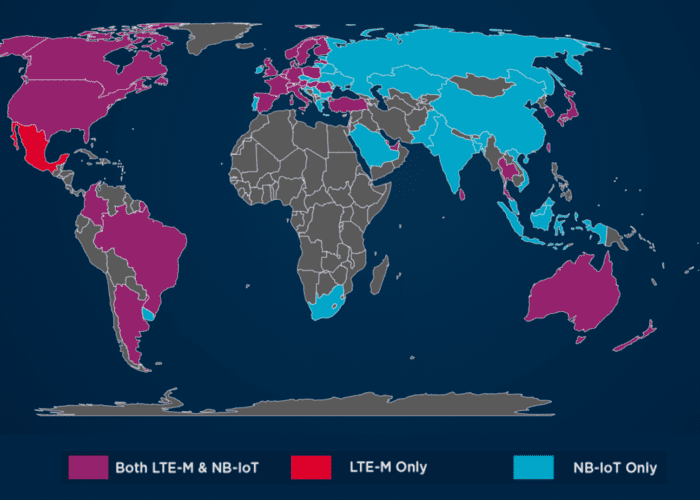However, another concern for IoT is closing the gap in reliable coverage. IoT devices are most effective when they can guarantee always-on connectivity without interruptions, slowdowns, or dark spots in coverage. In the case of 5G, this level of reliability requires a significant upgrade to wireless infrastructure so that it can handle larger data sets at higher speeds.
According to the International Data Corporation, the 5G and 5G-related network infrastructure market is expected to reach $26 billion by 2022. Companies like Verizon have met the infrastructure challenge by investing in small cell technology, which uses discrete wireless transmitters and receivers mounted in more densely developed urban areas. In places where small cell technology is ubiquitous, IoT developers can begin to tackle more ambitious connectivity projects, such as autonomous vehicles, that depend on the low latency capability of 5G.
While small cell technology is proving effective in these densely-populated urban areas, they do not account for connections in less-developed locations such as mountaintops, remote islands, or developing countries with poor infrastructure. For IoT developers, NGOs, and businesses with assets in these more isolated areas, a different solution is required to ensure they have fast, reliable connectivity to achieve their IoT goals.
Extending the Reach of Connectivity
For HAPSMobile, the solution to wireless networking in areas with little or no infrastructure is in the sky. Founded as a joint venture between SoftBank (parent company of Sprint) and U.S.-based unmanned aircraft company AeroVironment, HAPSMobile is developing a High-Altitude Platform Station (HAPS) system mounted on a drone that delivers telecommunications network connectivity from the air. Its prototype drone, called the HAWK30, is 78 meters long and powered by solar panels on its wings. It is designed to fly at altitudes of approximately 20 kilometers and is capable of building a wireless networking service area of 200 kilometers in diameter, both on the ground and in the sky.
The HAPS system is designed to operate at the same frequency as current wireless networks. Its wireless service does not interrupt or interfere with services that originate from traditional cellular towers, small cell technology, or other base stations. The compatibility of HAPS with current wireless coverage means that it can blend seamlessly with existing 4G LTE networks, facilitate 5G and IoT expansion in remote areas, and provide service to any smart device without requiring an upgrade to the device.
HAPSMobile has recently submitted an application to the Federal Communications Commission to begin testing their HAPS system over the island of Lanai, Hawaii. The test will evaluate the HAWK30s ability to maintain a stable LTE link with ground equipment, handover capabilities with end-user equipment, and signal coverage over the island. If the test is a success, HAPSMobile plans to build more drones for wider deployment.
HAPSMobile represents significant potential for companies looking to deploy IoT solutions in remote areas. For example, a company like SweetSense, operating in developing nations with challenging terrain, could use a HAPS system to further expand the reach of its smart water monitoring technology to ensure that more villages have access to clean water. In the world of asset tracking, closing service gaps could help deter cargo theft and provide more realistic positioning reports. With a HAPS system, wireless network coverage may be achievable wherever it is needed, and IoT applications that require faster, more robust 5G connections can be implemented outside of dense urban areas.
Reliable IoT Connectivity with Aeris
Aeris offers 2G, 3G, 4G, and soon-to-be 5G cellular connectivity in more than 190 countries across more than 550 carriers. We own and operate the largest North American cellular network built from the ground up exclusively for IoT applications, and our global reach expands every day. Since Aeris networks are built specifically for IoT, users receive better reliability, performance, visibility, and control over their IoT deployment.
The Aeris Intelligent IoT Network provides a single-pane, top-down view of all your connected devices, regardless of carrier or technology, and is architected to adapt to the rapid change of technology while simplifying the complexity of managing multiple connectivity relationships.
As companies like HAPSMobile continue to expand the reach of wireless networks, Aeris will be there to provide IoT solutions that are purpose-built for any connectivity challenge.
For more information on our connectivity reach, view our global GSM coverage map. To learn more about how you can deploy a robust IoT solution in a remote area, contact Aeris today.




